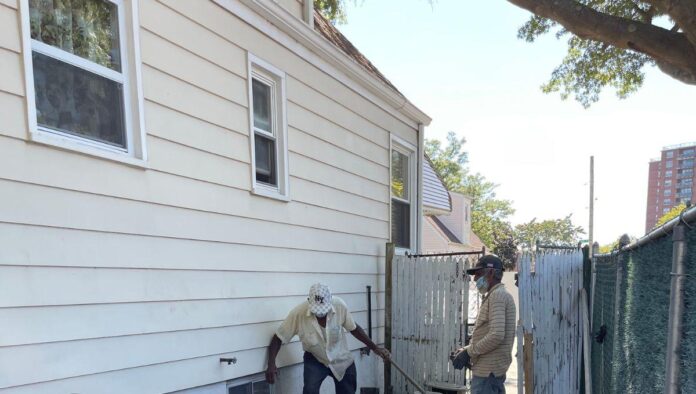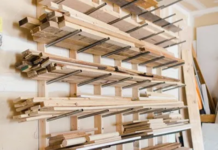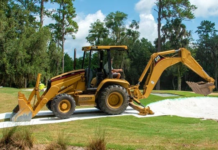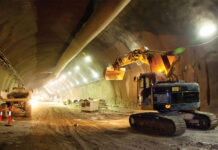Siding is the exterior cladding of your building that safeguards the internal structure from damage due to harsh weather and chemical elements. You can choose from various siding materials like wood, metal, vinyl, and stone to add a personal touch to the aesthetic appeal of your property. Regardless of how durable the siding material is, it undergoes some extent of damage over time. It is not surprising, though. Is it?
Being the foremost defence layer of your building, the siding is constantly exposed to extreme temperatures, moisture, and pollution, compromising its lifespan and functionality. Thus, gradually, over a period, the siding fails, leading to severe consequences. From enhancing energy efficiency to promoting structural support, siding has numerous significant benefits.
Therefore, address any damage concerns immediately by siding repair contractors before you start experiencing the adverse effects of siding failure! But to approve the best fix, analysing the cause of damage is necessary. So, here is a guide to help you understand the factors affecting the longevity of your siding.
Principal Causes of Siding Damage
Several factors affect the siding of your building, and the worst part is you cannot avoid them. Damages will prevail at some point because of the following reasons:
- Weather- Can you prevent a storm from coming? Neither can you cover your house in a blanket during the chilly winters! Extreme weather conditions play a critical role in weakening and degrading the siding of a building. You may notice warping, cracking, and fading due to weather impact.
- Moisture- A significantly common miscreant behind all constructional damage. Whether water, snow, or vapor, moisture in every form is threatening. Corrosion, rotting, and decay are the prevalent results of moisture intrusion.
- Pests- Wooden sidings are susceptible to termite infestation. Also, carpenter ant attacks are not to be ignored. Even certain other small insects and animals burrow holes that become an easy passage for moisture infiltration. So, what to expect? The siding loses its strength and structural stability. Do not delay and call an expert for siding repair in Queens.
- Incorrect Installation- Poorly installed sidings have lesser durability and are easily prone to damage. Improper caulking and placing of boards leave gaps, affecting insulation and causing water seepage into the interiors. The problems can get worse without prompt action.
- Roofing Problems- If you have a damaged roof, like leakage, missing shingles, etc., it accounts for a sizeable impact on the building siding. The roof is a crucial component for retaining building integrity. Anything going wrong with the roof will affect the siding.
As you can see, siding damage is inevitable! But with immediate repair solutions and proper maintenance, you can alleviate the potential risks.
Prominent Fixes of Siding Damage
Sometimes when the damage is extensive, you require a complete replacement of the siding. The cost to replace siding is higher than minor repair jobs. We are here to discuss the popular types of fixes:
- Patching- Minor holes and cracks in the siding do not require any invasive procedure. They are easy to mend when attended by a professional. The specialist evens out the surface by scraping and then fills the gaps with epoxy siding filler, offering improved durability and aesthetics. Since the filler is waterproof, you do not have to worry about water damage anymore!
- Repainting and Waterproofing- For fading and peeling paints, repainting is a preferred choice. After removing the old paint, a fresh layer is applied, acting as a protective barrier. To enhance its effectiveness, a waterproof coat is mandatory to impart additional water defence.
- Pest Treatment- Getting rid of the pest-affected areas at the earliest by a siding repair specialist will offer you higher benefits in the long run. When you do not control pests, the damage caused is irreparable. Treating the affected area with pesticides and replacing it can restrict the spreading of pests. Often wire mesh and bird netting are installed to avoid nuisance by tiny creatures.
- Choose Tough Siding Material- Fiber, vinyl, cement, and stone are more resilient than wood and metal. Wood is prone to rotting and metal undergoes corrosion due to moisture exposure. Thus, it is better to avoid such siding materials if you do not want frequent repair jobs.
- Replacement- Some damages like installation issues, structural problems, and severe physical impact are untreatable. You require replacing a part or the entire siding to mitigate the damage. It will ensure you prolonged sustainability and increased curb appeal. However, the siding replacement cost varies according to the damage source.
Final Thoughts
To sum up, since several factors are responsible for siding damage, it is necessary to perform regular inspections to rule out negligence. However, with proper maintenance and cleaning, you can extend the service life of your siding.











